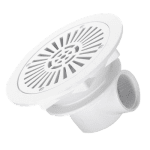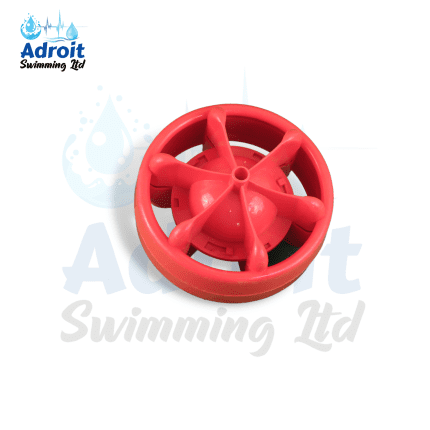Rope Lane
A rope lane for swimming pools is a vital safety feature designed to delineate swim lanes and organize pool space during recreational activities and competitions. Typically made from durable, weather-resistant materials, these ropes feature bright colors for high visibility and are buoyant, allowing them to float on the water’s surface. The design helps prevent swimmers from crossing into adjacent lanes, enhancing safety and providing a clear structure for organized swimming. Rope lanes are easy to install and can be adjusted based on pool size and needs. Ideal for both public and private pools, they contribute to a more efficient and enjoyable swimming experience.
Swimming Pool Rope Lanes: Enhancing Safety and Organization in Aquatic Spaces
Swimming pool rope lanes, often referred to simply as lane lines, are essential components of competitive swimming pools and recreational aquatic facilities. These ropes serve multiple purposes, including designating swimming lanes, enhancing safety, reducing wave interference, and improving the overall swimming experience. In this article, we will explore the various types of swimming pool rope lanes, their key features, benefits, and tips for proper installation and maintenance.Types of Swimming Pool Rope Lanes
- Standard Lane Ropes: Standard lane ropes are typically made of durable materials, such as nylon or polypropylene, and feature a series of floats attached along their length. These ropes are designed to stretch across the width of the pool, creating clear boundaries for swimmers. Standard lane ropes are commonly used in competitive swimming events, training sessions, and recreational swimming.
- Wave-Reducing Lane Ropes: These specialized lane ropes are designed with unique float configurations that minimize wave action in the water. The floats are often spaced closer together or designed in a way that disrupts wave patterns, reducing turbulence caused by swimmers. Wave-reducing lane ropes are especially beneficial in competitive environments where optimal performance is crucial.
- Endurance Lane Ropes: Used primarily in long-distance swimming events, endurance lane ropes are designed to provide a more stable boundary for swimmers over longer distances. These ropes may feature larger floats or additional buoyancy to withstand extended use in training and competition.
- Buoyancy Lane Ropes: Buoyancy lane ropes are specifically designed to float on the water’s surface, providing clear visual cues for swimmers. These ropes typically have brightly colored floats that enhance visibility, making it easy for swimmers to identify lane boundaries even from a distance.
- Adjustable Lane Ropes: Some pool facilities use adjustable lane ropes that can be lengthened or shortened based on the pool's size or the specific needs of an event. These ropes can be useful in multi-purpose pools where lane configurations may change frequently.
Key Features of Swimming Pool Rope Lanes
- Durability: Swimming pool lane ropes must be made from high-quality materials to withstand constant exposure to water, chlorine, and UV rays. Durable lane ropes ensure longevity and consistent performance, making them a worthwhile investment for any aquatic facility.
- Visibility: Brightly colored floats on lane ropes enhance visibility in the water, making it easier for swimmers to identify lanes and stay within designated boundaries. High-visibility lane ropes are especially important in crowded or busy pool environments.
- Flexibility: Lane ropes should be flexible enough to accommodate movement in the water while maintaining their shape and configuration. This flexibility allows swimmers to swim close to the lane lines without the ropes becoming a hindrance.
- Easy Installation: Swimming pool lane ropes should be designed for easy installation and removal. Many lane ropes come with hooks or clips that attach securely to the pool deck or wall, allowing for quick setup and takedown as needed.
- Customization: Some facilities offer customizable lane ropes, allowing organizations to choose colors, lengths, and float styles that align with their branding or aesthetic preferences.
Benefits of Using Swimming Pool Rope Lanes
- Organization: Lane ropes help organize the swimming area, creating clearly defined spaces for swimmers. This organization is especially important in crowded pools where multiple swimmers may be using the facility simultaneously.
- Safety: By providing clear boundaries, lane ropes enhance safety for swimmers. They help prevent collisions and ensure that swimmers remain in their designated areas, reducing the risk of accidents in the water.
- Performance Enhancement: In competitive swimming environments, wave-reducing lane ropes can significantly enhance performance by minimizing turbulence. Swimmers can maintain optimal speed and efficiency when racing in well-defined lanes.
- Training Aid: Lane ropes serve as a useful training tool for swimmers, allowing them to focus on technique and form while providing clear visual cues for lane boundaries. This can be particularly beneficial for novice swimmers learning to navigate the pool.
- Aesthetic Appeal: Brightly colored lane ropes can enhance the overall look of a swimming facility, adding visual interest and improving the atmosphere for swimmers and spectators alike.
Tips for Proper Installation and Maintenance of Swimming Pool Rope Lanes
- Correct Sizing: Ensure that the lane ropes are appropriately sized for the pool. Measure the width of the pool to determine the correct length for the ropes, allowing for some slack to accommodate movement.
- Secure Attachment: When installing lane ropes, use appropriate hooks or clips to secure them to the pool deck or wall. Ensure that the attachments are tight and secure to prevent the ropes from loosening during use.
- Regular Inspection: Conduct regular inspections of the lane ropes to check for signs of wear or damage. Look for frayed ends, loose floats, or any other issues that may compromise the integrity of the ropes.
- Cleaning: Clean lane ropes regularly to remove chlorine buildup and debris. This will help maintain their appearance and prolong their lifespan. Use a mild soap solution and a soft brush for cleaning, avoiding harsh chemicals that could damage the material.
- Proper Storage: When not in use, store lane ropes in a cool, dry place to prevent damage from UV rays or extreme temperatures. Proper storage will extend the life of the ropes and ensure they remain in good condition for future use.



















